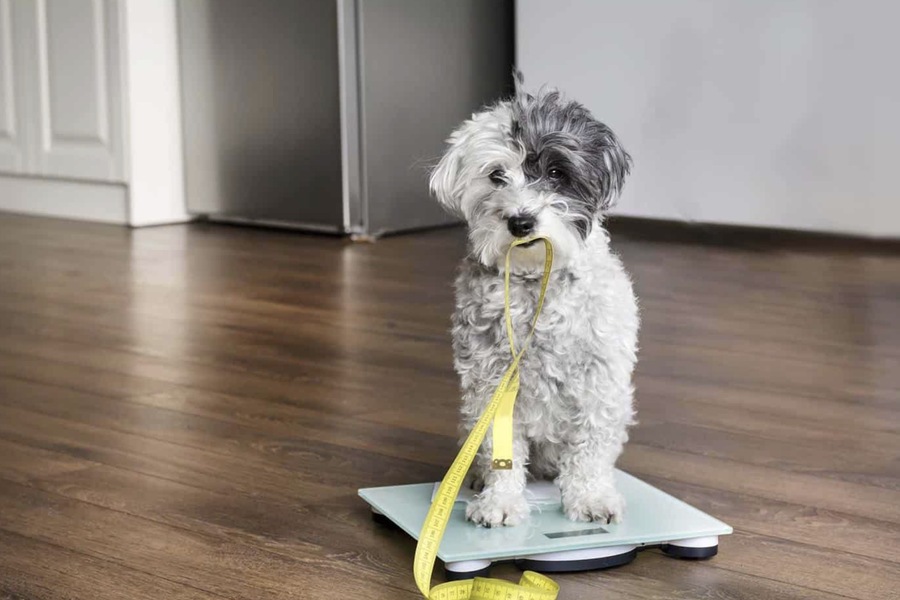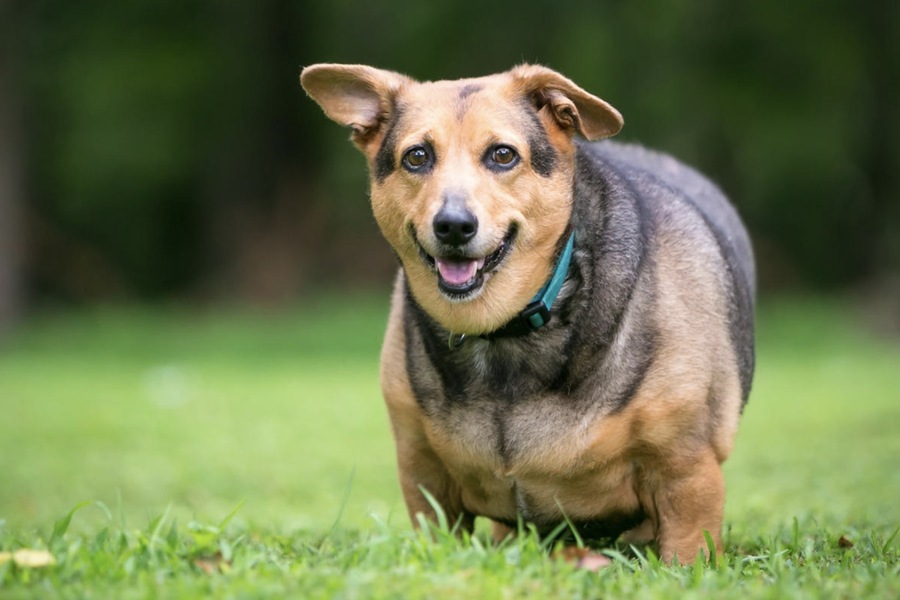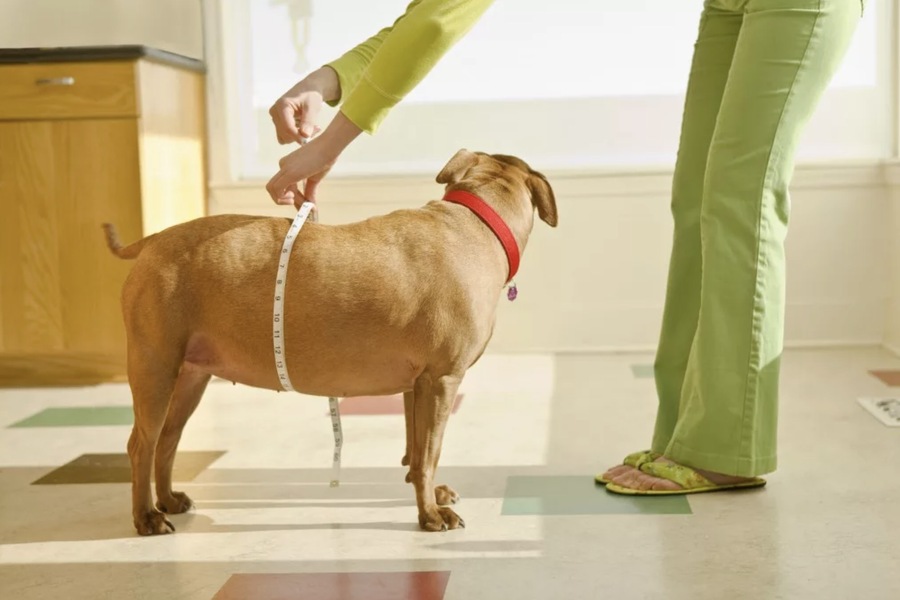Managing canine obesity is a growing concern for pet owners and veterinary professionals, especially in regions like Dubai and the UAE where lifestyle factors can lead to reduced physical activity. Regular grooming is often overlooked in this context, but it plays a crucial role in maintaining a dog’s overall health and aiding in weight management. In this article, we will explore how grooming can contribute to managing canine obesity, from facilitating regular physical checkups to promoting increased physical activity through interactive grooming sessions.
The Importance of Grooming in Assessing Body Condition
Grooming offers an excellent opportunity for assessing your dog’s body condition. Regular grooming sessions allow you to monitor your dog’s weight and body shape. By feeling for excess fat and changes in muscle tone, groomers can identify signs of obesity early. This can be particularly useful for long-haired breeds, where excess weight may not be immediately visible. If you notice any unusual lumps, excess fat, or weight gain during grooming, it may be time to consult a veterinarian for a proper health assessment.
Grooming and Physical Health Monitoring
During grooming, you can detect physical changes that may indicate obesity-related health issues. For example, grooming can reveal signs of difficulty in moving or increased fatigue, both of which are symptoms of weight gain. This physical checkup helps ensure that weight gain is not causing additional health problems such as joint pain or reduced mobility. Groomers can also check for skin conditions or infections in skin folds, which are more common in overweight dogs.
Encouraging Physical Activity through Grooming
Grooming sessions can be designed to incorporate physical activity, which is vital for managing obesity in dogs. Activities like brushing, trimming, and nail clipping can engage your dog in a form of low-intensity exercise. Regular brushing not only keeps the coat healthy but can also stimulate movement as your dog shifts positions. For particularly sedentary dogs, incorporating short walks or playful interactions during grooming breaks can increase their daily physical activity.

Benefits of Regular Brushing and Massage for Overweight Dogs
Regular brushing and massaging during grooming sessions can stimulate blood circulation and improve muscle tone in overweight dogs. Massaging helps relieve tension in muscles and joints, making it easier for obese dogs to move and exercise. Additionally, the increased circulation from brushing can promote a healthier coat and skin, which may suffer in overweight dogs due to restricted movement and poor grooming habits.
Identifying Weight-Related Mobility Issues during Grooming
Groomers are often the first to notice mobility issues in overweight dogs, such as difficulty standing for long periods or climbing onto grooming tables. These mobility challenges are directly linked to excess weight, which puts additional stress on joints and muscles. By identifying these issues early, groomers can suggest that pet owners consult with a veterinarian or a canine nutritionist to develop a tailored weight management plan that includes dietary changes and exercise routines.
The Role of Grooming in Preventing Secondary Health Issues
Obesity in dogs is often accompanied by secondary health issues, such as skin infections, joint pain, and respiratory problems. Grooming helps in identifying these problems before they worsen. For instance, overweight dogs may develop skin infections in skin folds due to moisture buildup and reduced airflow. Regular grooming sessions can help keep these areas clean and dry, reducing the risk of infection. Additionally, trimming excess fur and cleaning paws can prevent bacterial and fungal infections, which are more common in overweight dogs.
Grooming Techniques for Managing Weight in Long-Haired Breeds
Long-haired breeds, such as Shih Tzus or Pomeranians, can conceal weight gain under their thick coats. Regular grooming allows you to assess their body condition and manage their coat in a way that prevents matting and overheating. Trimming excess fur can make it easier to spot weight changes and encourage more physical activity. For these breeds, it’s also important to keep the fur around the paws trimmed, as excess weight can cause splaying of the toes, leading to discomfort and reduced mobility.
The Psychological Benefits of Grooming for Obese Dogs
Grooming offers psychological benefits that can support weight management in overweight dogs. Grooming sessions are an opportunity for bonding, which can reduce stress and anxiety. Reducing stress is crucial for managing weight, as anxious dogs may engage in comfort eating. A calm, stress-free grooming session can encourage positive associations, making it easier for dogs to participate in physical activities like walking or playing.
Maintaining Hygiene in Overweight Dogs
Overweight dogs are prone to hygiene-related issues such as matted fur, skin fold infections, and difficulty reaching certain areas during self-grooming. Regular grooming is essential to maintain hygiene and prevent complications that arise from poor coat care. For instance, overweight dogs may struggle to clean themselves after urinating or defecating, leading to skin irritation and infection. Grooming these areas properly can prevent such issues and contribute to overall health improvement.
Dietary Management and Grooming
While grooming is not a substitute for a balanced diet, it complements dietary management by providing insights into a dog’s physical condition. Groomers can observe changes in coat quality and skin health, which are often linked to diet. For example, a dull coat or flaky skin can indicate nutritional deficiencies that may be contributing to obesity. Incorporating omega-3 fatty acids and other nutrients into a dog’s diet, along with regular grooming, can improve coat quality and support healthy weight management.

Creating a Grooming Schedule for Overweight Dogs
Establishing a consistent grooming schedule is essential for managing obesity in dogs. Frequent grooming sessions provide regular opportunities to monitor weight changes and adjust grooming techniques as needed. It also helps maintain a dog’s comfort and hygiene, making it easier for them to engage in physical activity. Consider scheduling grooming sessions every 4-6 weeks for overweight dogs to ensure their coat, skin, and overall health are well-maintained.
Professional Groomers’ Role in Canine Weight Management
Professional groomers in Dubai, such as “Pets in the City,” play a significant role in canine weight management. They are trained to identify physical changes related to obesity and can provide advice on grooming techniques that encourage physical activity. Professional groomers also have access to specialized equipment, such as grooming tables designed for large breeds, ensuring the safety and comfort of overweight dogs during grooming sessions.
Collaborating with Veterinarians for Comprehensive Care
Groomers and veterinarians should work together to provide comprehensive care for overweight dogs. While groomers can identify weight-related issues and offer recommendations for at-home grooming routines, veterinarians can develop a tailored diet and exercise plan. This collaboration ensures that all aspects of a dog’s health are considered, making it easier to manage obesity effectively. Regular communication between groomers and veterinarians can lead to better outcomes for the dog’s overall health.
Conclusion
Grooming is a critical, yet often underestimated, component of managing canine obesity. It provides a platform for early detection of weight-related issues, encourages physical activity, and maintains hygiene. Regular grooming sessions, combined with a balanced diet and an exercise routine, can significantly contribute to managing your dog’s weight and improving their overall health. For pet owners in Dubai and the UAE, partnering with professional grooming services like “Pets in the City” can ensure that your dog receives the specialized care needed to thrive in a desert environment while maintaining a healthy weight.
Biker, traveler, drummer, Bauhaus fan and RGD member. Performing at the fulcrum of beauty and mathematics to craft meaningful ideas that endure. Concept is the foundation of everything else.
